Fishing is a sport that appeals to the adventurous, but also to those who love to spend time outdoors while enjoying a relaxing pastime. As evidence of the popularity of fishing, in 2011, anglers paid upward of $41 billion in recreational fishing expenditures. Additionally, in 2014, there were as many as 50 million fishers in the United States alone. As a pastime, fishing is sometimes an art passed down from one generation to another. However, there are times when a person who wants to learn how to fish may have little to no guidance.
Many beginner anglers find that what they need to learn is overwhelming. Undoubtedly, those new to the art of fishing will have many questions. Once you learn the basics that every angler needs to know, you will soon find yourself enjoying the adrenaline rush when you start catching those fish at the end of your line.
Types of fishing
Many types of fishing exist. Defining the types of fishing involves examining different methods of categorization. First, the primary categories for fishing include recreational, sport, and commercial.
When it comes to fishing for beginners, the neophyte angler will start in recreational endeavors: Fishing for the sheer enjoyment as a relaxing pastime. Later, once the beginner learns how to catch a fish with greater proficiency, the angler can move on to other fishing practices like fishing for competitive purposes and big game fishing. Commercial fishing is for those interested in pursuing the art as a career: A job that is exciting, profitable, and dangerous.
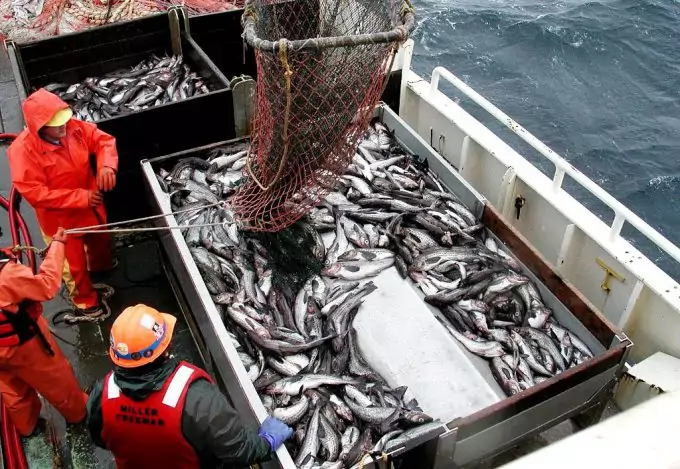
The type of waters or location can also define the sport of fishing where one fishes. The two umbrella categories for location-based fishing include marine water or fresh water. Bodies of marine water and ecosystems include the sea, coral reefs, mangroves, lagoons, estuaries, intertidal zones, salt marches, and oceans.
Conversely, bodies of fresh water, sometimes called sweet water, include streams, rivers, lakes, ponds, and bogs. Marine and sweet water fishing are broken down into categories that are more specific.
See also:
Marine water fishing includes several fishing styles including, but not limited to, surf or shore fishing, netting, and deep sea fishing for fish like tuna, marlin, striped bass, snook, snapper, sharks, sea trout, sailfish, mackerel, kingfish, halibut, and more. In contrast, freshwater fishing is also subject to categorization and includes catch and release, trapping, and angling for trout, catfish, crappie, musky, walleye, bass, and salmon, among other fish.
When it comes to fishing for beginners, some types of fishing are more practical, simply because they are easier to learn. There are relaxing or casual fishing methods that will allow the neophyte to learn how to catch a fish, without the additional pressures associated with competitive types of fishing. Below is a table revealing some of the most common types of fishing and the necessary skill level required.
| Fishing type | Description | Recommended skill level |
| Angling/Pole Fishing | Angling involves using a rod, line, reel, hook, bait/lures, and sinker/float to catch fish. May involve bait or spin casting, still or drift fishing, and catch and release fishing methods. | Recreational – beginnerSport – Intermediate |
| Big game | Also known as blue water, game, and off sport fishing, big game fishing involves catching swordfish, marlin, sharks, and tuna. | Recreational – intermediate to advanced |
| Bow and spear | The use of archery equipment or a spear to strike a fish while it is in the water. This type of fishing requires some familiarity weapons used. | Recreational -advanced |
| Fly | The use of special equipment with a weighted fishing line. Fly fishers use a near weightless artificial fly – this allows for casting at a considerable distance. The casting method requires some time to master. | Recreational – intermediate to advanced |
| Netting | A form of fishing using tangle net, hand netting, trawling, and cast netting. | Recreational – beginner to intermediateCommercial – advanced |
| Trapping | The use of fish trapping equipment, including eel, lobster, and crab traps, among others. | Often used in commercial endeavors. |
Fishing rod design
Fishing rods are dependent on the type of fishing you pursue, but for the most part, the rods have similar designs. From the handle to the rod tip, a fishing rod has several definitive features. A butt cap is at the end of the fishing rod handle, which features a reel seat. Beyond the rod handle, the thinner portion of the pole, which are typically metal or fiberglass material, there is rod or butt featuring small notch called a hook keeper used to hold the hook when the fishing pole is not in use. Check out our reviews of the best fishing rods to give you more options.
You will use the hook keeper when walking to and from your fishing spots. The butt cap is often made of cork or rubber material so it will not cause you any discomfort when pressed against the body while fishing.
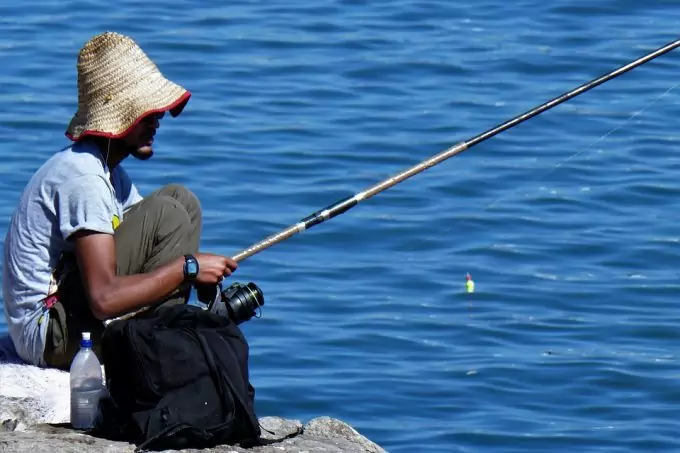
At the end of the butt of the rod is the female ferrule that inserts into another portion of rod through the male ferrule. The male ferrule features several hoops serving as a line guide. Rods are available in a variety of sizes, and choosing one depends on the fisher’s age and the type of fishing one is pursuing.
It is important to note that fishing poles and rods are not the same, even though they are both a form of fishing equipment. A pole is absent of line guides and is usually crafted out of cane. The pole will not have a reel, whereas a rod features guides and a seat for the fishing reel.
Reels, rods, & equipment
When learning how to catch a fish, some thought must be given to the type of rod and reel you want to use; the equipment for catching trout in a stream will not be the same as the equipment you would use for sword fishing on a deep sea excursion. Knowing the type of fishing you want to engage in is the first and most vital step you can make when learning how to fish.
You can find out what equipment is ideal for your fishing adventure easily enough. Your first option is to visit a sporting good outlet or local bait and tackle shop. Talk to the store representatives or staff and discuss what the best equipment is for your needs.
Define your needs by telling the store staff what type of fishing you want to do and where you plan on fishing. In lieu of a store recommendation, if you have friends or family who are into fishing, you can discuss the type of equipment you need with them. An experienced angler will be more than happy to discuss their favorite pastime and to share a few fishing stories too.
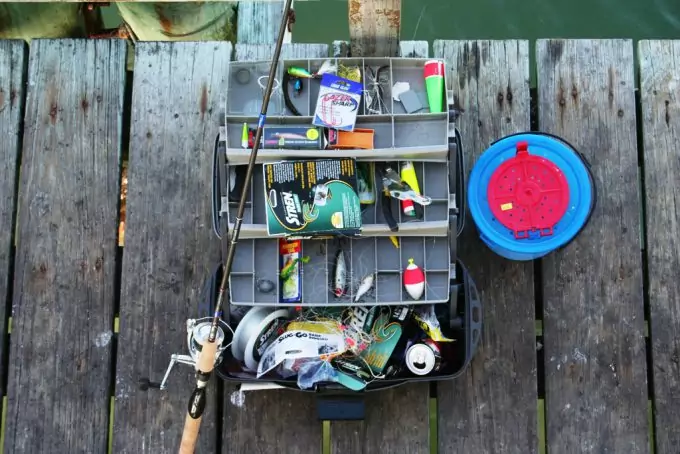
Fishing requires a hefty initial investment and the equipment list grows the deeper your involvement in the sport. You will need a six or seven foot graphite fishing rod, spinning reel, line, and a collection of hooks in varying sizes. Additional equipment includes a tackle box, spinners, pencil floats, split shot, egg sinkers, snaps, and ball bearing swivels.
Rod & reed assembly
There are one piece and two piece fishing rods that you can buy, the difference being that with a one piece rod you can attach the fishing reel immediately, and with a two piece rod you have to piece the rod together before attaching the reel. The advantage of a two piece rod is that you can break it down for easier transport. The disadvantage of the two piece rod is that it can slip apart if your catch is big. The one piece rod is a bit more difficult to transport, but there’s no worry about the rod pieces coming apart when you fish.
If you have a two piece rod, you will have to insert the female ferrule into the male ferrule. You have to ensure that both ends are debris free and clean before piecing them together. A Q-Tip is a quick way to swab out the interior of the female ferrule before inserting the second half of the fishing pole. To put the join the two parts of your rod, hold both ferrules at an angle of 45 degrees and slowly push one end into the other, while simultaneously gently twisting the male ferrule.
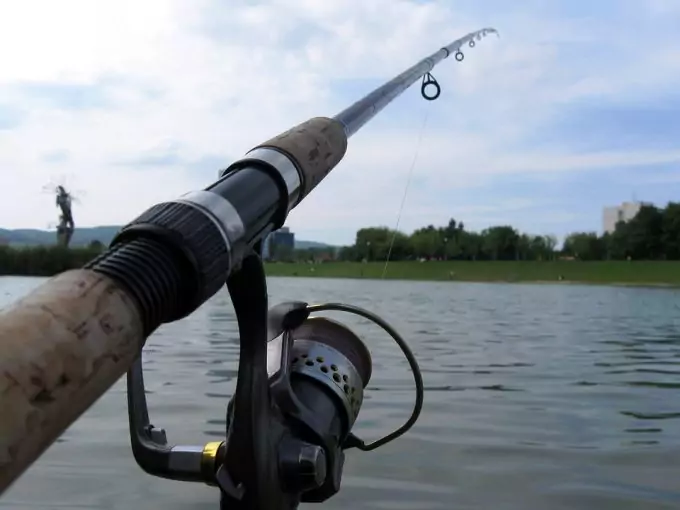
Once the rod is together, it is time to attach the reel. Attaching the fishing reel is easy to do. The fishing rod reel slot is a groove inside the handle. You slide the reel into the slot, and pull the sleeve over the bottom of the reel and tighten the nut.
Fishing lures vs. live bait
There are three forms of bait a fisher can use, and bait choice is based on the type of fish you want to catch. The bait includes lures, prepared bait, and live bait. Many fishers prefer live bait because the fish can sense the presence of the live bait and they are therefore easier to catch. For the beginner learning how to fish, live bait is definitely ideal. This is not to say however, that there are not lures available that work equally well as live bait.
Live bait types available include worms, grubs, crickets, bugs, mealworms, night crawlers, maggots, grasshoppers, frogs, leeches, crawfish, and minnows. If you are learning how to fish and worms or other live bait creep you out, you can always use lures for your fishing endeavors instead.
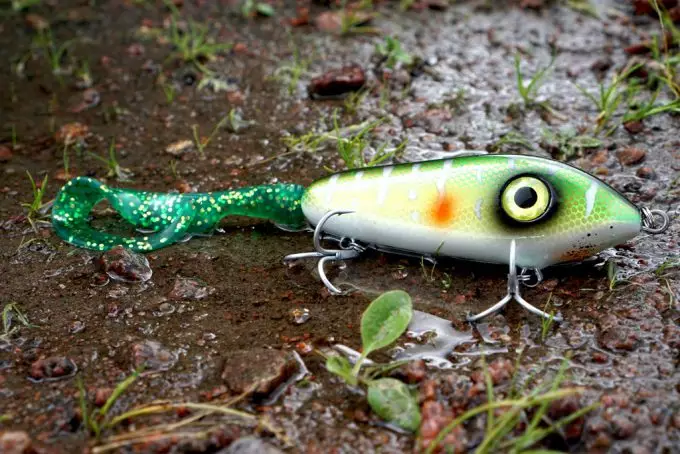
Just as there are many forms of live bait, fishers have a choice of lures. Spinners are lures that when reel the line in will spin thereby mimicking the movement of live bait. Jigs consist of a fishhook molded into a lead weight. Jigs can be painted any color and are used for deep water fishing, whether in fresh or salt water locations. For the best trout baits, see our article on this imporatant matter.
The angler puts the jig in the water and lets it sink to the bottom. The fishing line is wound a couple inches, and the fisher uses an up and down jigging motion with his hand to mimic the movement of live bait. Additional lures include spoons, fake flies, rubber worms, artificial crawfish, and artificial bugs.
More on fishing lure types
Fishing lures is a big business because many fishers prefer the advantages associated with their use. In terms of cleanliness, fishing lures are clearly a cleaner bait option. What’s more, when it comes to live bait the fish you capture can end up with a gut hook where the bait is taken deep into the belly of the catch. The gut catch makes it a bit more difficult to get your catch off the hook, and is not a great situation when you are engaging in catch and release fishing. The issue with gut hooks is not eliminated with the use of lures, but is definitely minimized.
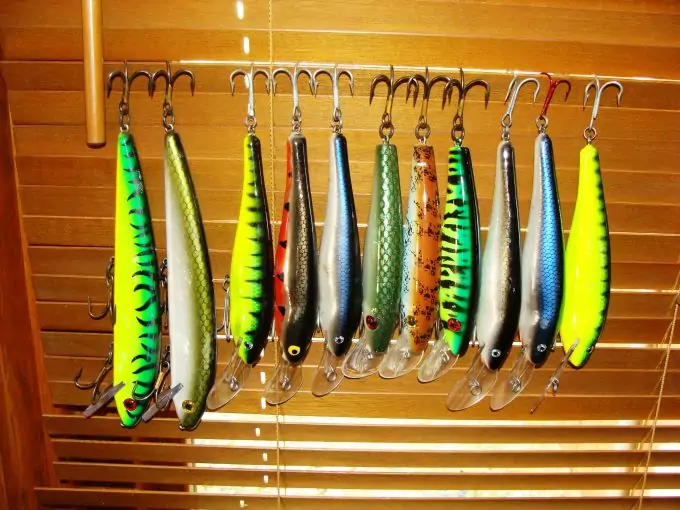
With so many lure designs, a fisher can target the fish of their choosing with ease. Bear in mind that lures will prove far more costly than live bait, and, if you pay considerable expense for them, you may find it financially troublesome when the lures get knotted up in underwater obstacles and lost. In addition to the lures mentioned above, there are also the following lure equipment options.
Spoons: Briefly mentioned above, spoons are metal lures with a curved feature. The lures come in all sizes and colors, and are equipment that wobbles side to side in the water mimicking the action of baitfish that has been injured.
Plastic soft bait: Also mentioned briefly above, plastic soft bait is created to look like live creatures like frogs, lizards, crawfish, and worms. There are also soft bait critters that do not mimic nature.
All about prepared fishing bait
Along with lures and live bait, fishers have the option of making use of prepared bait products. Some prepared baits are prepped by the angler while others are manufactured commercially. Some forms of prepared bait work better than others, so knowing which one to choose may take some experimentation. Deciding what prepared bait you need is based on what type of fish you want to catch.
Dough bait is excellent for catching catfish and bull heads, but it does falls apart after it gets wet. Once it begins to fall apart, it can fall off the hook quickly. Salmon Eggs are great for trout fishing. The product is sold by the jar and is available in tackle shops or some department stores. The fish eggs are easy to use as the fisher simply slides them onto a small hook.
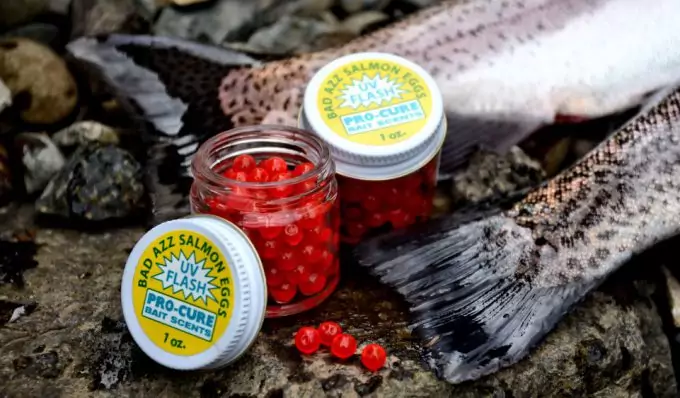
Other forms of prepared bait include pork rinds, hot dogs, and chicken liver. Pork Rinds are a form of prepared bait for catching catfish; the same goes for hot dogs and chicken liver. Some people even use corn when fishing, which works well for bait, but is also bad for the fish. The corn can get caught in the intestines of the fish causing the fish difficulty with the digestion of the bait. In some states, it is illegal to use corn as bait. Some people even use bread to fish with; however, this is not without issues. The minute bread gets wet, it will fall right off the fish hook.
Fresh water vs. salt water
Saltwater fishing has pros and cons, and understanding the advantages and disadvantages will help you in determining where you want to learn how to fish. The pros include the excitement of being out on the ocean and fishing for huge selection of underwater life. When compared to sweet water fishing, you will often find larger fish and greater fish diversity is bodies of salt water.
However, the cons associated with saltwater fishing include the fact that you have to find the right location, which may not always be local, and it can require travel, not just by land, but also by boat. The travel can prove costly. Most saltwater bodies are along the coast, thereby making it difficult for some anglers to get to the locations to fish.
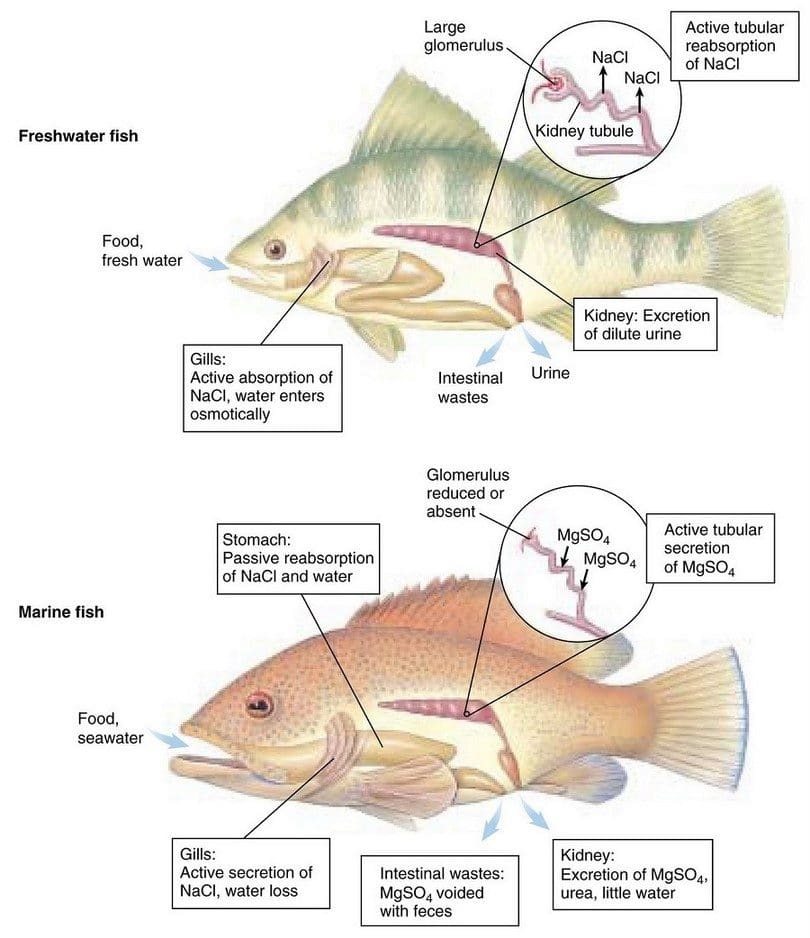
The pros of sweet water fishing, as mentioned above, are there are plenty of locations to choose from and many are local. If looking to make fishing a family activity, freshwater is often nearby campsites and other recreational locations. The cons, of course, are a limited variety of fish species, and limitations in the size of fish you can catch. Nevertheless, there are still some large fish you can catch in bodies of sweet water.
There is also less danger involved in freshwater fishing pursuits. Basically deciding on the type of water you are going to fish in will be a decision based on your location, wiliness to travel, and the affordability of going to locations at a considerable distance.
Fishing knots
For successful fishing endeavors, you have to learn how to catch a fish you are going to eventually have to master the art of knot tying. When it comes to knot tying, the standing line is the portion of the line that remains still during the knot tying process. The tag end is the absolute end of the fishing line and it is the moving part of the line when making a knot.
- Clinch knot: When making a clinch knot you will wrap the tag end of the fishing line around the standing line a total of five times. Once you complete the wrap arounds, you run the tagline through so that so you form a loop. This type of knot is ideal for line consisting of 20 lbs test lines.
- Loop knot – non-slipping variety: If you want a fishhook that has moveability, this is an ideal knot to choose. You establish a fixed loop around the hook. The tag end of the line is wrapped six or seven times around the standing line right after the line goes through the hook eye.
- Palomar knot: Another knot great for 20 lbs test lines, the fishing line goes through the eye of the fish hook two times, thereby strengthening the knot’s hold. Once run through the hook, the line is tied, knotted, and is then looped over the lure or the fishhook.
Additional knots to learn include the surgeon’s loop, surgeon’s knot, figure eight loop, in line drop, arbor knot. Read our piece on how to tie fishing knots for more information.
Line loading for spinning reels
When you are learning how to fish, you are also going to have to learn how to maintain your fishing equipment. Taking proper care of the equipment will ensure your maximize the longevity of your fishing gear.
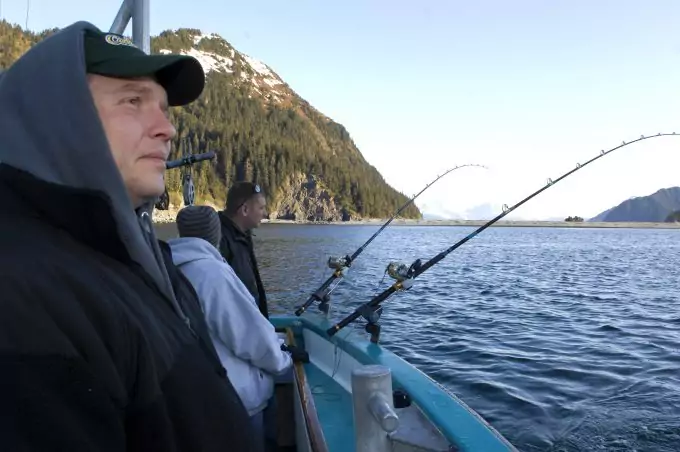
Line loading is act of maintaining your fishing reel. Take the line and run it through the eyelits of the pole, through the bail, and wrap the line two or three times around the spool, and tie a slip knot. Using a pencil or stick, run it through the fishing line while another person holds the ends of the stick (if you are alone you can mount it on something), and wind the line up tightly.
Hold pressure on the line by holding the fishing line between your thumb and index finger. Make sure you keep the slack out of the line. Continue to wrap the line to the desired yardage you want. Make sure you are careful not to overfill the spool. If you overfill the spool, the line will tangle more easily.
Line loading is something that should be done on an annual basis. If you do not load new line on your reel, the line becomes brittle. Brittle line will break when you are attempting to reel in your catch. Once you finish line loading, you can add your hook, lure, spinner, and sinker. Most spools of fishing lines come with directions on what knots to use, how many yards of fishing line are on it, and the line test.
Drag setting for spinning reels
The drag setting allows you to establish the amount of resistance a fish will sense whenever it pulls on your fishing line. As a fish tires, you can tighten up the drag. If the fish starts fighting against your attempt to wind it in, you can loosen the drag again to make the fish sense less resistance. The drag dial is located on top of the fishing reel. You can turn the clockwise to tighten the drag, and counterclockwise to loosen it.
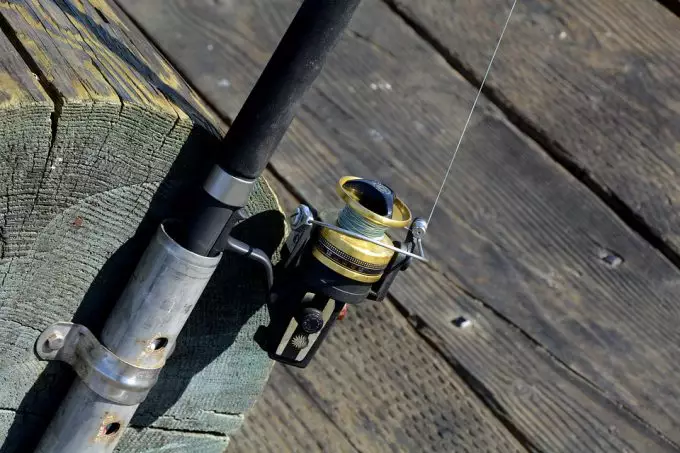
The bait runner on the reel is a secondary drag. It is located on the bottom of the reel and acts like a switch. Flipping up the bait runner switch lets the live bait run with the line so the fish can have the opportunity to tire itself. When the fish tires, it is easier to catch. The bait runner can be tightened like the drag. It can also be loosened. To tighten the bait runner, you have to turn the round knob at the base of reel clockwise to tighten the bait runner, and counterclockwise to loosen it. If either drag is too tight, you can lose the fish.
Some fishers use a scale method to set the drag. A small digital scale is attached to the line and the drag is set based on a specific weight. The latter method is considered more accurate in terms of a drag setting method. Alternatively, many skilled fishers approve of feeling the drag instead of using a scale.
Fishing tips and tricks
When learning tricks on how to catch a fish, there are some important things to remember. First, make sure you know all you can about the type of fish you are trying to catch. If you understand a fish’s behaviors and habitat, you will have a better chance at catching it. As you approach your fishing spot, that’s the time to quiet down. Place your equipment down in a safe location, but do so quietly.
When fishing, be as quite as possible. You don’t want to disturb the fish and scare them off before you get a chance to catch them. Make sure you wear dark clothing so you are not easily visible. Keep your profile as low as possible, especially when fishing in shallow waters. Make sure you also note where your shadow falls, as movement, even if cast from your shadow, can frighten off fish.
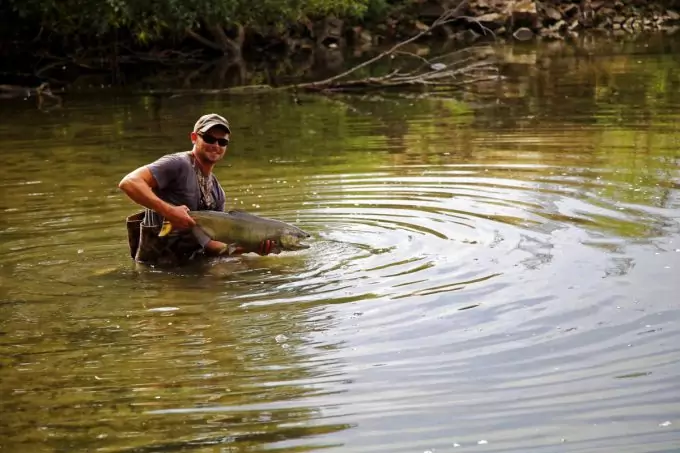
Secure your bait solidly enough so it will not fall of the hook. Make sure you have plenty of bait with you, and if you are using lures, bring extra. That way, if the lures get knotted up in the water and you lose them, you can continue fishing by replacing it with another. Finally, make sure you have the appropriate freshwater or saltwater fishing license so you can fish legally.
Learning how to fish is a process, one worth the time investment if you really want to get into the sport of fishing. You will have to be prepared for an initial investment of both time and money, especially if you are going to get quality equipment for your excursions. You will need to be patient with yourself as you learn all the different fishing techniques there are to learn.
Like anything worthwhile, the more time you invest, the better you will become. Once you learn the basics of fishing, you can begin to advance in the sport, by participating in big game fishing and competitive events.
For more tips and information, see our important article on knowing how to fish.

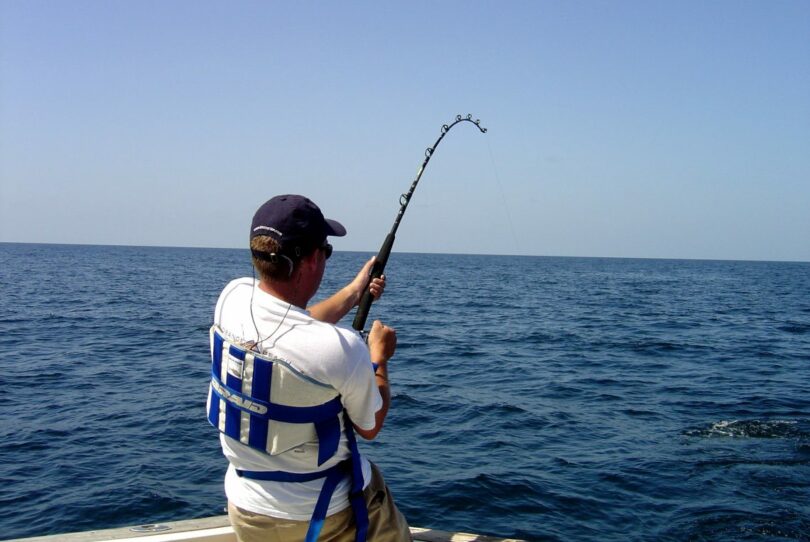
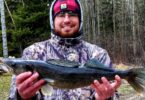
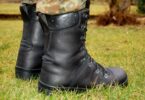

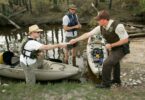
i agree with the last part. It’s the same reason why my husband does not bring me along his fishing trips, I’m just too noisy for his taste.
You should try and be quiet, fishing is fun especially when you are in company of someone.
Finding a good fishing spot is a lot of fun. Good fisherman know what type of fish lives on what terrain and use techniques to lure the to their bait.
If you enjoy fishing for a certain type of fish make sure to learn when it eats, where it lives and start catching it. It is very enjoyable.
Thank you Rodney for sharing your opinion with us.